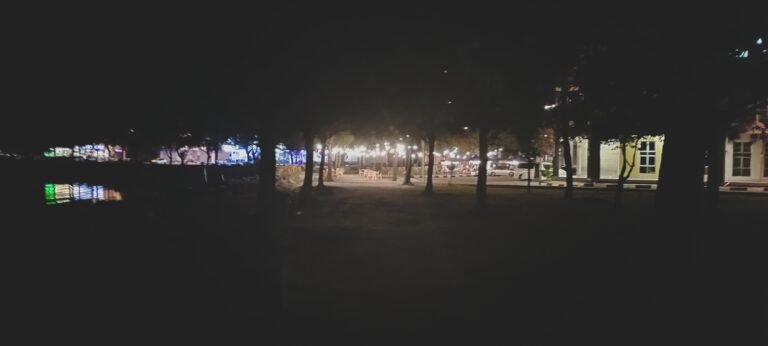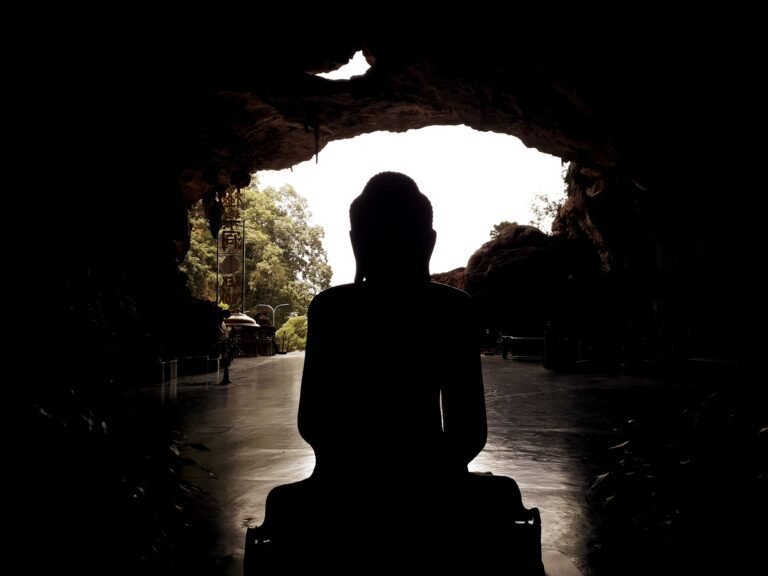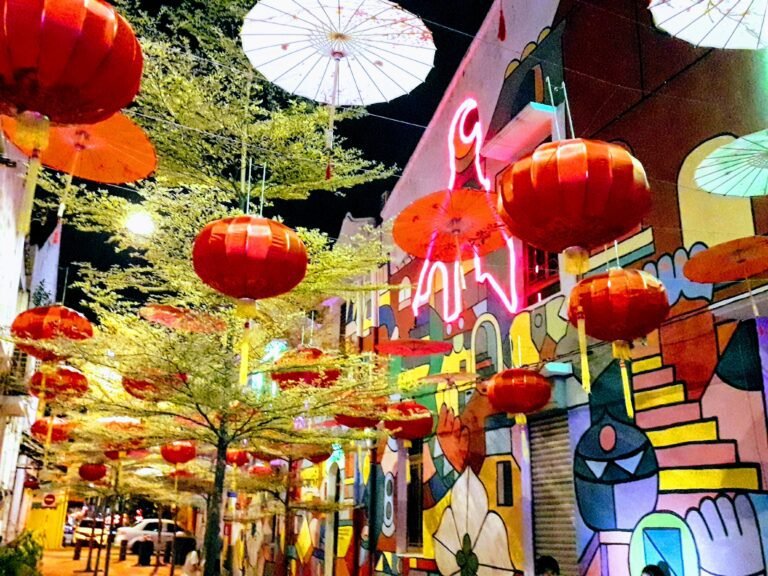Sungai Lembing is a storied place and one that requires much consideration. The visitor may find it on the east coast of Malaysia, some 26 miles northwest of Kuantan and three hours from Kuala Lumpur, the City of Mud, along the Karak Highway.
Sungai Lembing, which some may call ‘Spear River’, lies tucked away in the forests of Pahang. Through the village flows a body of water that bisects the land like a knife stroke. But the place and the water have different names, for there is no river called Sungai Lembing. Only Sungai Kenau. And it is Kenau that flows through the heart of Sungai Lembing.
Such a distinction formed the basis of a dialogue between two figures, who skirted the edge of Sungai Lembing. The early-morning mist obscured their features. But their direction was clear: Bukit Panorama, one of many peaks around the basin. From atop this hill, they could mull the order of What Once Was and how it became What Is Now. And they had picked Sungai Lembing as their model.
Read More: Winged Magic: Unseen Eyes Watch Over Gunung Mulu
As they climbed the diagonal tunnel, with it steps just awkward enough to deny regular walking rhythm, they listened to the sounds that shrouded them. They heard the calls and responses of birds and cicadas. They sensed the flapping of butterfly wings. And they honed in on the marching ants that carpeted the forest floor. All threatened to engulf the pair if nature should see fit to deem it so.
Still Climb
One figure then turned and spoke to the other, who moved in silence. The former was of this place and shared tales of Sungai Lembing’s name: that its title came from a ruler who beheld a vision of a spear in the nearby river and thus named his town after such a sight. Or perhaps not. Others spoke of the indigenous Orang Asli, Peninsular Malaysia’s oldest inhabitants. It is said that it is these people who bestowed Sungai Lembing with its name after throwing a spear at a beast they chased over Sungai Kenau.
Time and tide offer these different perspectives, the one said as the other listened. They seemed not to feel the cold of an early start, and they made good time in their climb. The forest tunnel was open enough to avert the threat of claustrophobia. Through the cracks, they could see the awanano smothering the hilltops. A carpet of clouds, the one confirmed to the other, gesturing to the valley below as it became shrouded in white. The forest was thick and untouched Both noted that nature still holds sway in Sungai Lembing.
Read More: Inner Trip: Borneo’s Jungle Spirits Eye Revenge
Before long, they had reached the summit, where a pavilion and two paths awaited them. Instinct drove them to the left and a pinnacle from which they could see hints of the valley and mountaintops below. They knew Kuantan and the sea lay further west ‘neath the horizon. The pair breathed the crisp air, which refreshed them. They drew parallels with other places where the atmosphere is equally fresh.
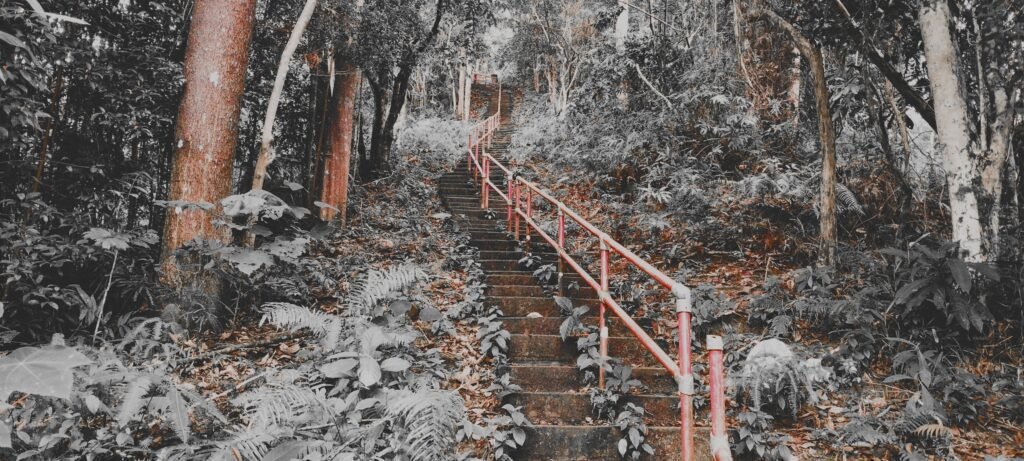
The one who spoke recognised the importance of silence and chose to speak only rarely. A tale well told will let the subject speak for itself, the pair agreed.
And below them, they saw the entirety of Sungai Lembing. Green hills and mountains encircled wooden buildings and shop fronts that ran the length of a single main road that hugged the course of Sungai Kenau.
Former Strength
And this is What Once Was, the one spoke to the other. For in the early parts of the twentieth century, Sungai Lembing held a position of power. In those days, tin mining generated great business. Sungai Lembing was one of its bases. Its hold in the industry rivalled the likes of Taiping and Ipoh. Like those places, the ghosts of former glory keep a sharp eye on the course of the present.
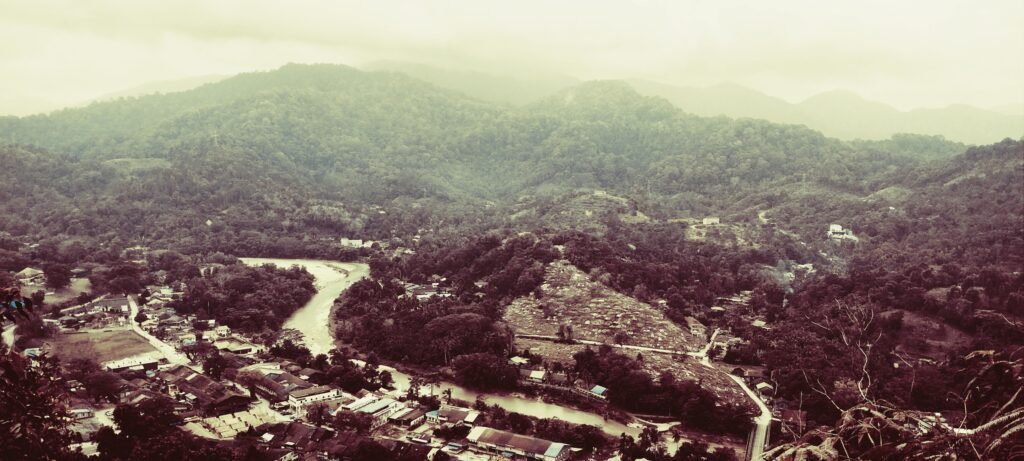
The pair looked back to 1886. There, they watched tin mining take hold in Pahang. Come the dawn of the 1900s, the industry grew even bigger, braced by the British company Pahang Consolidated Company Limited (PCCL). One buttressed the other. Sungai Lembing had the resources, and the organisation had the means to mine and distribute them. A mutually beneficial arrangement arose. Sungai Lembing soon had electricity, schools and a petrol station. Its hospital and duty-free shop were, at one time, the only ones in Pahang. Rumours abound that Sungai Lembing’s cinema was the first in Asia.
Sungai Lembing, then, the one spoke to the other. A place of some distinction once at the vanguard of progress. The pair looked deep underground and saw that the tin mining operations spanned an enormous area, once the world’s deepest and biggest. The mine’s tunnels, if combined, reached 200 miles, or the same length as driving between the City of Mud and Bukit Mertajam in Penang.
Read More: Other Side: Exploring Lushoto’s Teeming Twilight Realm
And the mines themselves – a trio named Myah, Taibeto and Gagak – reached between 610m and 700m into the ground. A greater height than Merdeka 118, the shining skyscraper that looms over Kuala Lumpur. At the industry’s zenith, and making the most of Sungai Lembing’s position on top of the world’s second richest tin deposit, 5,000 miners produced 4,000 tons each year.
Things Change
Progress stalls, though. And Sungai Lembing soon learned this lesson. Disaster befell the area in 1926 when floods caused a three-month lull in mining operations. So, too, did the town struggle with the production limits resulting from the Great Depression. And, come the Second World War, more woe. Japan’s occupation of Malaysia between 194(X) (Editor: That’s not right, is it?) and 1945 saw resources hidden and mines flooded to deny the invading forces access to tin and the boon in assets that would result therefrom.
Sungai Lembing, the one spoke while the other listened, faced a downward slope, which reached its nadir after Malaysia’s independence. The global call for tin fell sharply, as did its prices, and doom soon came over the horizon in search of Spear River. The fates cackled, and the mines closed in 1987. Silence fell over Sungai Lembing as many residents left in search of work elsewhere. The town’s industry soon changed its focus from mining to agriculture. But this brought its own drawbacks. Deforestation, for one, and the ensuing rise in flooding. A precipice had formed, and the town teetered over its edge.
And thus did close one chapter of Sungai Lembing where, such was its mineral wealth, the town became known as the El Dorado of the East. But its embers never died, and they awaited the telling of the town’s story. Such shoots appeared in 2001 with the opening of the Sungai Lembing Museum, a grand building on a hillock outside the town centre. From inside the museum, the town’s history came to life, and its past was not forgotten.
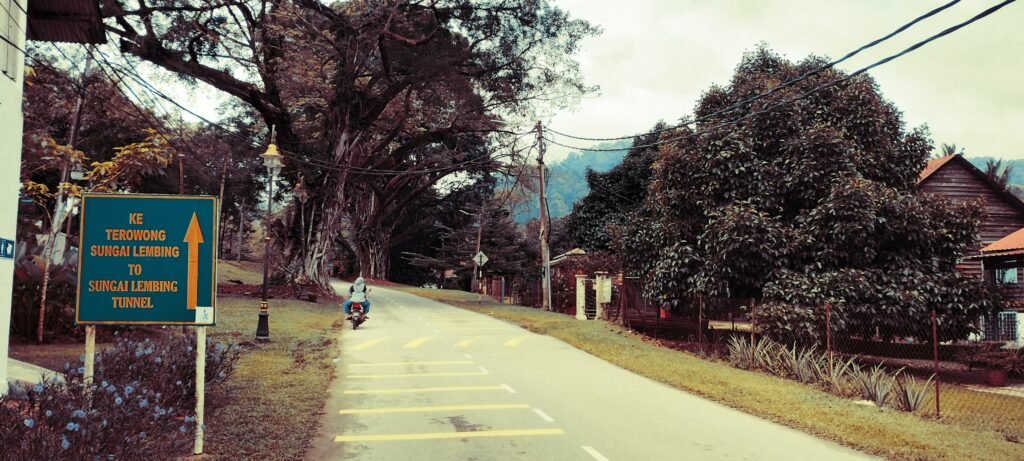
The museum has a quality of reserved stasis that mirrors the stillness of the town. It is as though both building and place belong to another time, and their pace aligns more with forests and rivers than built-up enclaves. The pair looked to the museum and placed it a few hundred metres north of the town’s main strip, using the aged, venerable trees – over a century old with bases as thick as elephant limbs – in the main strip as a marker.
Past Life
And why should a town such as this not celebrate its past? The unfeeling cruelty of time should not derail a place simply because its assets – in this case, tin, the one chose not to say aloud for fear of offending the other – no longer have the value they once did.
Instead, guardians of knowledge descended upon Sungai Lembing. They converted the home of the mine manager into a fount of learning. They gathered trinkets and paraphernalia that sang of the town’s former life: mining tech, clothing, equipment, furniture. And they made dioramas that give life to scenes from when tin mining formed the whole world in this part of Pahang.
All these things the pair saw from Bukit Panorama. They scoured the whole of Sungai Lembing: the graveyard on the other side of the valley, the bus station, the wooden food courts and their stir of chatter. Floating through the alleys, the two saw that the holy also had representation in the town: a temple, that the people call Thean Hou. This space honours the Chinese sea goddess Mazu. A statue gives form to her presence, and she watches over her devotees and the river beyond.
The pair then started their final circle of Sungai Lembing. First, they crossed Jambatan Pelangi, a wooden bridge with multi-hued slats that swings – but never perilously – over Sungai Kenau below. This time, the water moved in a state of calm reflection. Such calm should be valued, for the river can also churn and toil when enraged in times of flooding, and it takes no prisoners. But for the most part, the bridge stays secure, and many people cross it.
Further south, having heard the river gurgle contentedly by waterside villages, the pair made a return journey across Kolong Pahat, another hanging bridge. People spoke of a waterfall close to Lubuk Beruk that paints a rainbow, and the two wished to see it. The colour comes from a trick of the senses, the one and the other noted, when water and light bounce off one another at just the right time and angle. But this moment had passed, and the clouds had yet to fully part, and they could not verify such notions when they reached the fall.
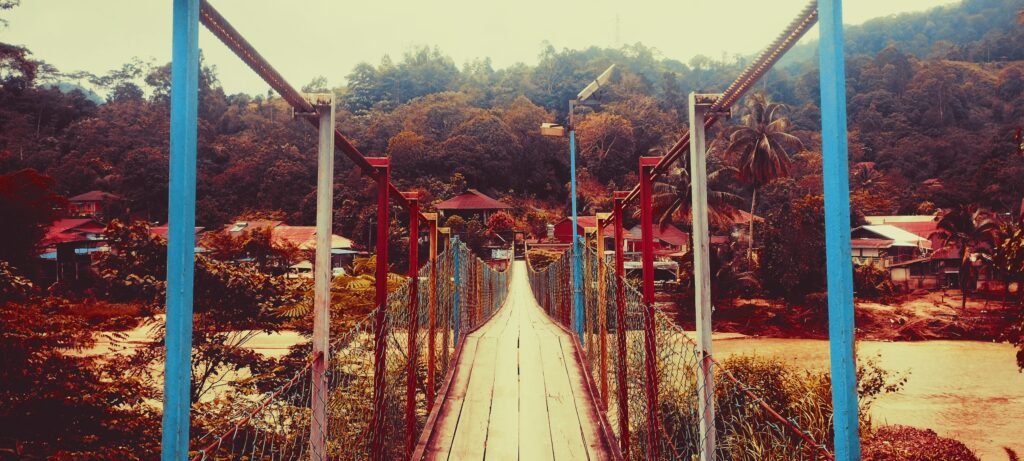
But they could not fail to miss the massif of Gua Cheras, for it is a stone structure, nearly 20km east of Sungai Lembing and close to Panching, that rears from the ground like a titanic beast. This cave, they both knew, homed the Sivan Hindu temple. Buddhists and Hindus find much about the cave that is sacred, and they cherish it as such. Within its corners reside shrines and statues in honour of certain deities, including a 30-foot Buddha that reclines in the dark.
So did the pair’s time come to an end. This is What Is Now, the one said to the other, motioning across the valley to encompass the skyline and all that lay further yonder. Thus sated, the speaker, head still bowed, took its leave and disappeared further into the undergrowth; the other, more silent partner, turned heel and returned from whence it came, swallowed by the ascending rush of clouds. And no more was there to say on the subject.
(NB: Not great, this one. The flow’s clunky and rather than creating a sense of detachment, the writer just comes across as aloof. Not the desired effect at all. The scene-setting’s poor as well. No real sense of place. If we could provide the unfortunate reader with a coupon to reclaim time wasted, we would. But we can’t. And neither can we promise that future stories will be any better. The two figures riff is pretty cool, though. With a bit of work, that could be a proper thing. Maybe the Gajah Mungkur story might be more readable. The only saving grace is that since nobody reads this site no-one will notice how bad the story is.)
Discover more from Eye in the Middle
Subscribe to get the latest posts sent to your email.

